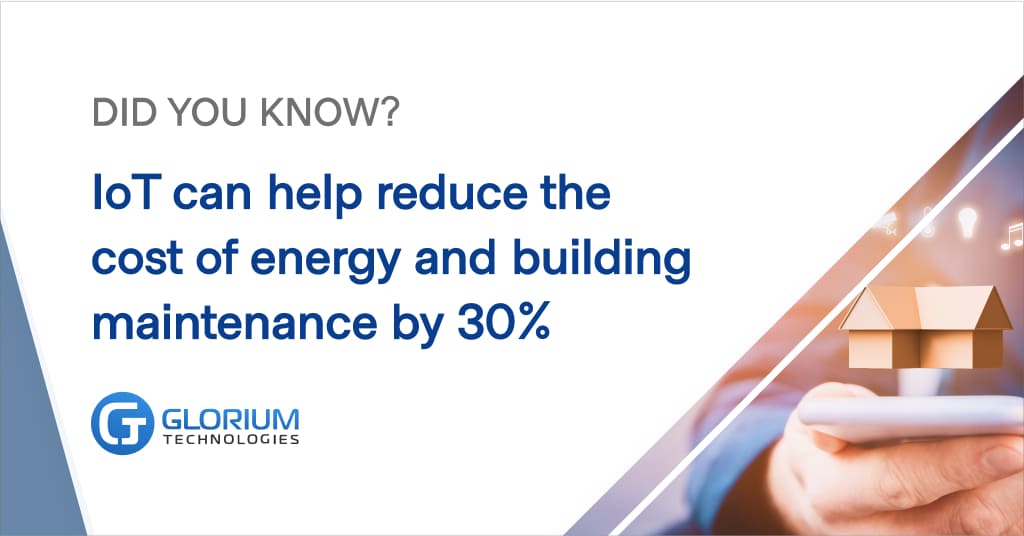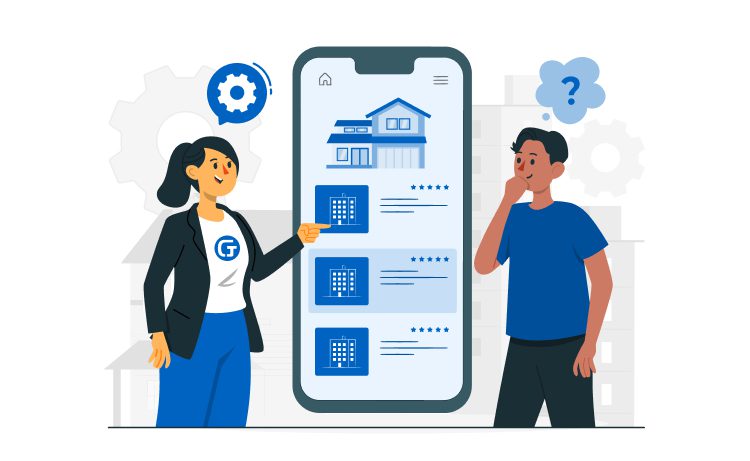
Key Connectivity Technologies & Solutions For Smart Building Automation



Although smart technology has been around for quite some time, the proptech sector has been gaining more interest and attention in the real estate industry over the years — and for good reason.
As a result of COVID-19, a visible shift occurred in the commercial property sector in 2020 (read: a massive plunge in the CRE market due to COVID-19 impact) which increased the demand for automation and connected technology.
Now, more than ever, smart buildings have led to increased savings and better property decisions, all while making the real estate industry more sustainable.
As buildings consume roughly 30% of all energy globally, optimizing energy use in the commercial sector will have a massive impact. As a result, connective technology that enables smarter spaces has displayed promising potential for the commercial real estate industry.
These technological advances have made life easier for investors, owners, and property managers alike. Collectively, these connected spaces and technologies are referred to as ‘smart buildings’.

Content
A smart building is a property powered by a set of technologies, including connected devices and sensors, all with the ultimate goal of automating facility maintenance.
In fact, there are a variety of different technologies that are used to help proptech startups keep buildings connected. Popular methods include smart devices and sensors networked with the Internet of Things, that collect and transmit property data into a centralized infrastructure.
In addition, AI-enabled technology and deep-learning algorithms are often used to automate and interpret volumes of building data.
This technology can be used to automate detection to spot and correct potential issues relating to building maintenance and can also be used to provide analytics for long-term strategies.
Far from being solely limited to existing commercial properties on the market, smart technology can also be used to enhance building construction quality to maximize ROI throughout the building and planning stage.
A decade or two ago, smart building technology mainly focused on indoor climate control and HVAC systems; today, however, smart technology coverage has vastly expanded.
Connectivity tools and data-driven analytics encompass virtually all processes including property construction, monitoring operations, climate and lighting, security, and facility servicing.
Brokers and property owners can now successfully implement smart technology to maximize the use of commercial real estate properties in a variety of ways.
The increased need for remote working environments with limited physical interaction has accelerated the need for smart spaces. Of course, physical offices are not going to disappear, but the commercial property sector has taken a huge plunge since the beginning of 2020.
Smart tech can be implemented to maximize space, reserve energy, and manage building operations remotely. In addition, commercial properties can be visited virtually with help from AR and VR technology that creates a realistic viewing experience.
Space connectivity appears to be the key when it comes to maximizing commercial real estate yields. According to Cluttons, a property consultancy firm, 78% of landlords have reported that they were able to successfully increase rent due to enhanced connectivity, while 72% of respondents claimed they were able to reduce voids in occupancy rates.
There’s a clear trend forming. Occupants are beginning to consider smart technology to be a must-have feature meaning that digitally-unconnected spaces will soon become redundant and unprofitable.

The Internet of Things (IoT) is typically first mentioned when it comes to connectivity and smart building automation. IoT encompasses a set of devices and sensors that are connected through a robust data ecosystem where information is collected, processed, and responsive actions are assigned.
IoT systems lead to vast savings via energy conservation and space optimization. Research Vice President at Gartner, Bettina Tratz-Ryan, backed this notion stating,
“In large sites, such as industrial zones, office parks, shopping malls, airports or seaports, IoT can help reduce the cost of energy, spatial management, and building maintenance by up to 30%”.
Modernized connected systems can even automate building operations with systems that can detect potential maintenance issues (plumbing, electricity, etc) and proactively assign technicians to investigate.
Connected systems in smart buildings can provide the following:
CRE-connected systems offer much more than simple motion sensors and lighting control. The biggest advantage in regard to the commercial real estate sector lies in the data generated by the IoT environment.
Such a powerful connection network complete with multiple data sources requires businesses to have an integrated system that connects with the required devices and allows property owners and managers to access the necessary data easily.
IoT itself isn’t a ready-made infrastructure, but rather an ecosystem of various information sources. Here, data centralization comes into play to reduce friction and make the most of the connectivity provided by smart devices.
Having a single integrated infrastructure of property data allows property managers and owners to proactively monitor and manage building operations and leverage data for business decisions.
Investing in specific software solutions like integrated BMS to drive the most value from connected systems allows CRE companies to unlock further opportunities to increase revenue.
Such data can be used to analyze valuable insights and analytics, enhance the overall tenant experience, diagnose and prevent issues, and fosters better investment decisions to maximize profits.
As mentioned earlier, digitally-enabled and optimized spaces are becoming increasingly important issues to CRE users. Real estate companies can develop tech solutions to provide tenants with access to relevant information to prove that a property is safe and connected.
To achieve this, all solutions must have sophisticated mobile applications or platforms complete with high-end user interfaces to clearly interpret building data.
Interactive applications can be a game-changer for CRE software providers as they transform the traditional customer experience into a fun and exciting experience.
With a massive spike in demand for efficient space utilization, smart services are also a great ability to increase revenue and present a company as environmentally responsible.
In previous decades, security meant physical safety. Today, digital security is equally as important. Huge volumes of data that are accumulated within smart building systems require not just an integrated and interoperable BMS, but also a robust security program.
With more connected systems, security threats are becoming more prevalent as a result of a growing interest in the misuse of valuable user data.
To deliver the most value and provide a high-end experience to their clients, CRE companies and brokers need to provide strong, industry-specific security solutions that cater to both physical and virtual safety.
With data encryption and AI-based solutions, software providers can make platforms and applications resistant to data breaches, and set up access baselines for different types of users.
In terms of smart building security, this kind of technology can enhance safety with video monitoring, smart locks, access gateways, and can be used to control systems to monitor motion, unauthorized building access, and send timely alerts to all responsible parties.
The value of CRE data extends to the primary stages of construction, where analytics and insights from tenant behavior and building management can help design and construct more efficient spaces.
With help from advanced analytics tools powered by artificial intelligence and deep learning, certain patterns can be defined and used by designers to develop and construct buildings more efficiently.
Equipped with this data, CRE investors can make smarter property decisions and attract high-value tenants.
AI-enabled automation has multiple uses in CRE management. Based on the data provided by connected systems, the software will suggest automated actions that can be performed with little to no manual involvement.
Traditionally, this is the most convenient way to cut operational costs, as automation technology not only handles tasks without human labor but prevents costly mistakes due to human error.
Though smart technology is nothing new to the real estate industry, modern technology has allowed for revolutionary solutions to combat the current problems of the real estate market.
In light of the pandemic, as of late January 2021, there is 12.2 million square feet of vacant sublet space in New York City. In the second quarter of 2019, there was 6.4 million square feet of vacant space — that’s an increase of 91%.
With so much vacant space, CRE companies are constantly on the lookout for new ways to increase revenue, attract tenants, and maximize space.
Smart technology is the solution. Apart from traditional IoT and connected systems, there are many other factors that make a building ‘smart’. In short, more data, connectivity, and analytics will increase property value and drive the demand.
As such, commercial property software providers should focus on offering interoperable, integrated BMS solutions and platforms for data management and communication.
For investors, property infused with smart tech and automation will lead to better purchasing options with in-demand space, regardless of the current conditions.
For brokers, this is an opportunity to make more specific and customer-oriented offers, which leads to faster and more profitable deals. For tenants, smart tech means increased safety and connectivity.
Ultimately, smart CRE has an impact on a much broader ecosystem than simply just property investors and brokers. This technology has huge potential for global energy savings and sustainability, and could even play a massive role in fighting climate change in the near future.








